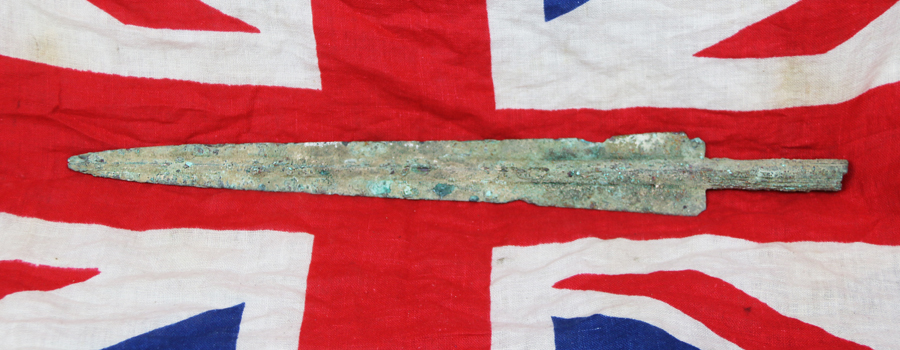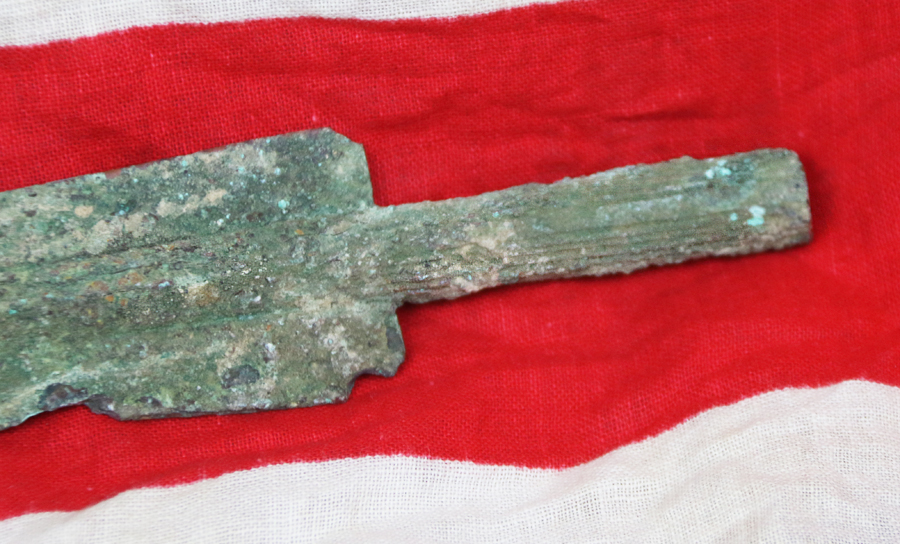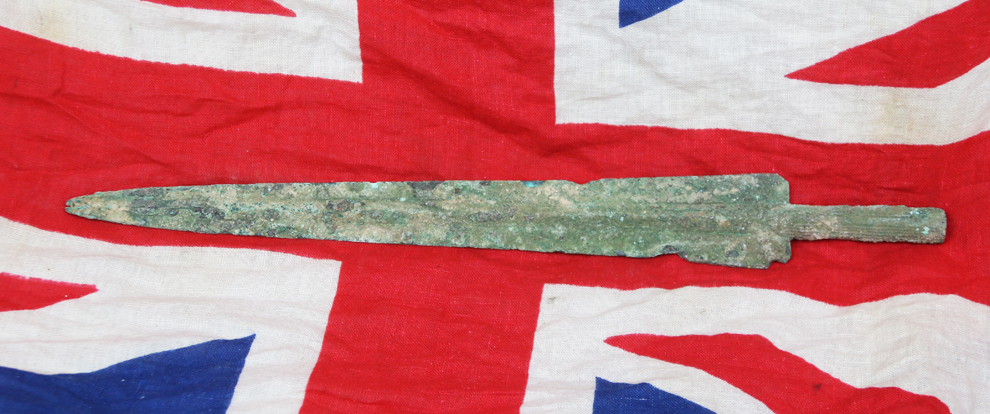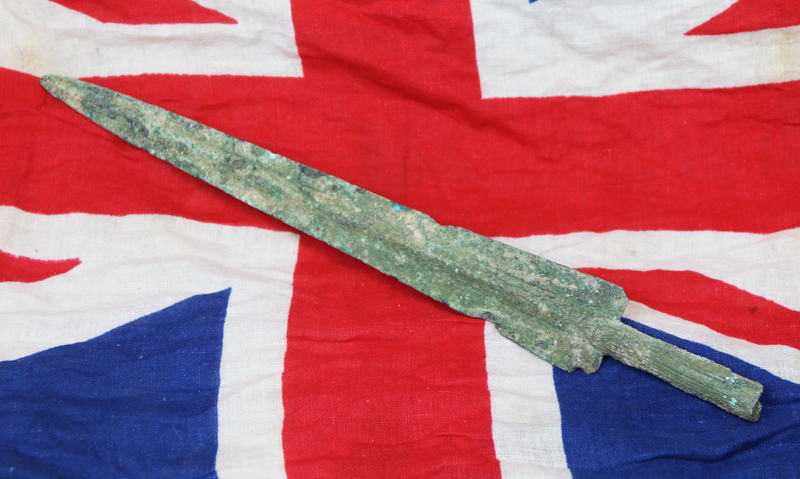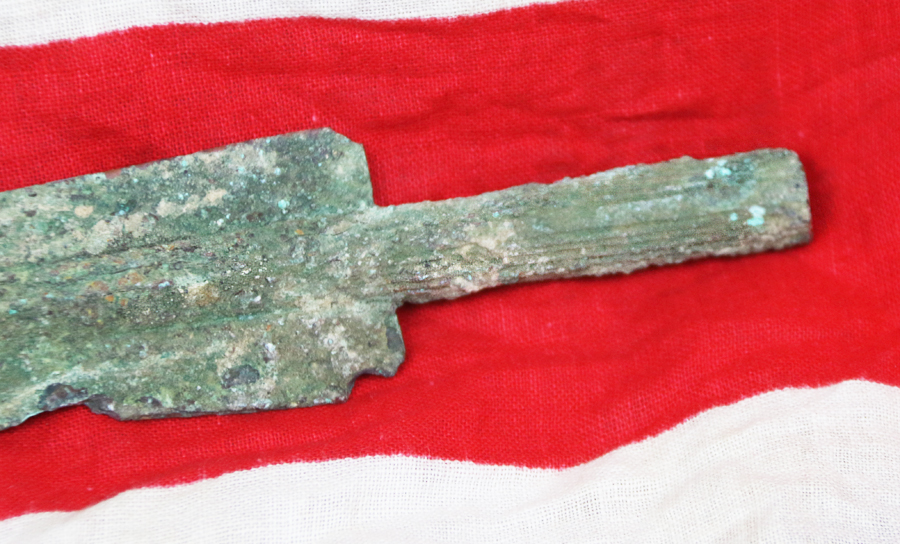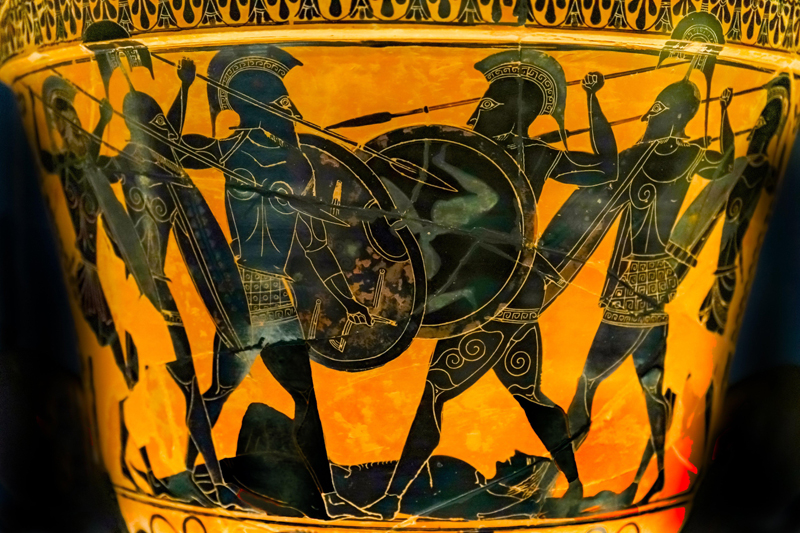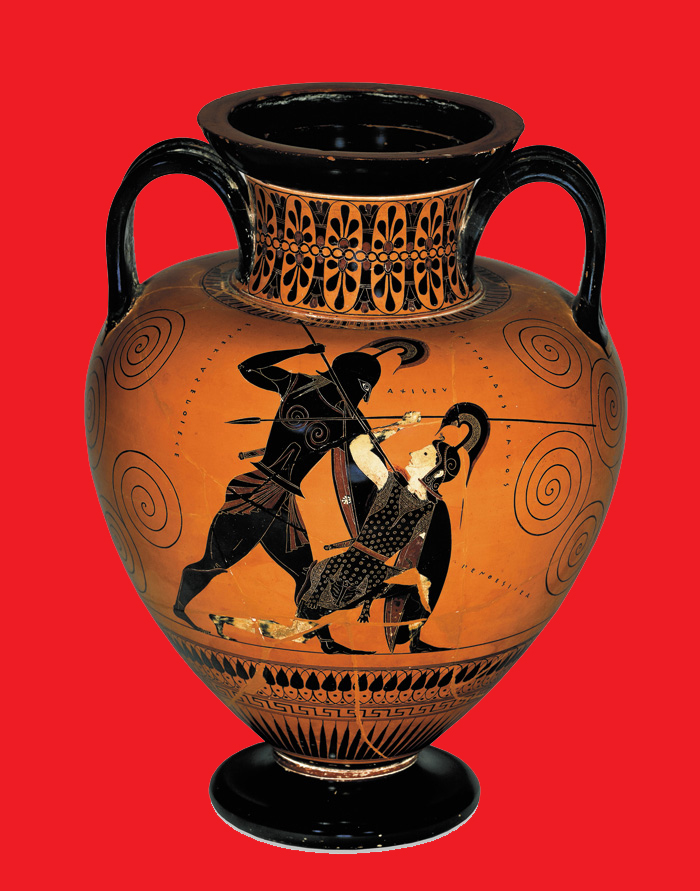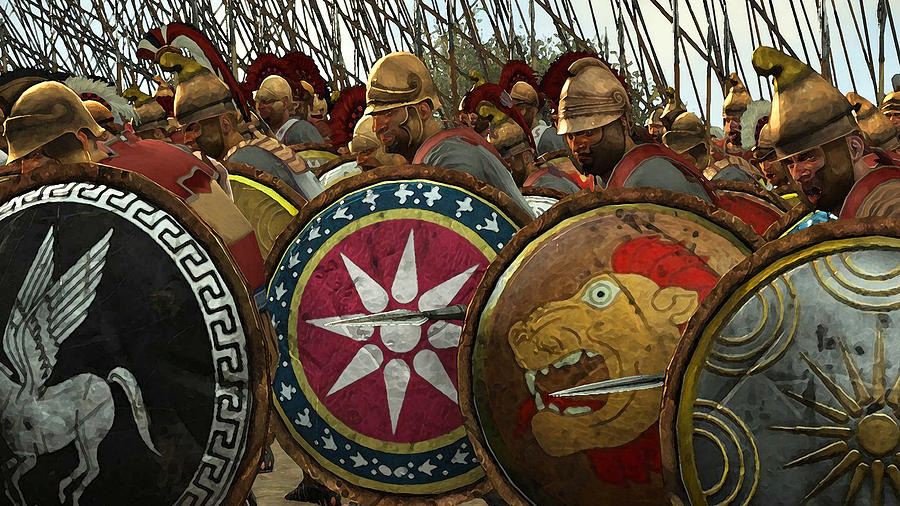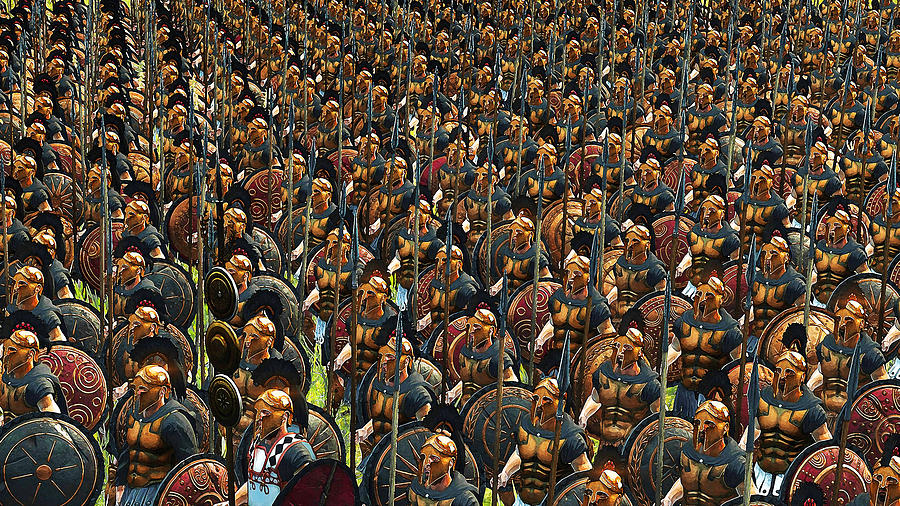A Superb Excavated ‘Grand Tour’ Fine Bronze Age Lance Head, Trojan War Period 3200+ Years Old. From the Legendary Age of Hector, Agamemnon,Paris, Helen of Troy and Achilles
Dominant central rib, graduating long triangular blade and engraved socket. A lance or spear head traded with the Eastern Mediterranean Scythians, Persians and Greeks during the 2nd to Ist millennium B.C. around 2700 to 3200 years ago. Copper alloy circa 1200 B.C. A beautiful Bronze Age battle spear, probably the most used and popular weapon of all the ancient wars of antiquity. Items such as this were oft acquired in the 18th and early 19th century by British noblemen and women touring famous battle sites and their regions in Europe, especially Northern France, Italy and the Middle East on their Grand Tour. Originally placed on display in the family 'cabinet of curiosities', within their country house upon their return home. A popular pastime in the 18th and 19th century, comprised of English ladies and gentlemen traveling for many months, or even years, througout classical Europe, and Middle East, acquiring antiquities and antiques for their private collections.
One such family’s descendants have been allowing us to purchase such wonderful pieces from their family collection for around the past 30 years.
We are very privileged to be the UK’s premier original military antiques gallery and website, and to be able to consistently, continually, and regularly, offer the finest original collectors items in our shop for over 100 years
This is a most handsome ancient bronze weapon from the era of the so called Trojan Wars. The ancient Greeks believed the Trojan War was a historical event that had taken place in the 13th or 12th century BC, and believed that Troy was located in modern day Turkey near the Dardanelles. In Greek mythology, the Trojan War was waged against the city of Troy by the Achaeans (Greeks) after Paris of Troy took Helen from her husband Menelaus, the king of Sparta. The war is among the most important events in Greek mythology and was narrated in many works of Greek literature, including Homer's Iliad and the Odyssey . "The Iliad" relates a part of the last year of the siege of Troy, while the Odyssey describes the journey home of Odysseus, one of the Achaean leaders. Other parts of the war were told in a cycle of epic poems, which has only survived in fragments. Episodes from the war provided material for Greek tragedy and other works of Greek literature, and for Roman poets such as Virgil and Ovid.
The war originated from a quarrel between the goddesses Athena, Hera, and Aphrodite, after Eris, the goddess of strife and discord, gave them a golden apple, sometimes known as the Apple of Discord, marked "for the fairest". Zeus sent the goddesses to Paris, who judged that Aphrodite, as the "fairest", should receive the apple. In exchange, Aphrodite made Helen, the most beautiful of all women and wife of Menelaus, fall in love with Paris, who took her to Troy. Agamemnon, king of Mycenae and the brother of Helen's husband Menelaus, led an expedition of Achaean troops to Troy and besieged the city for ten years due to Paris' insult. After the deaths of many heroes, including the Achaeans Achilles and Ajax, and the Trojans Hector and Paris, the city fell to the ruse of the Trojan Horse. The Achaeans slaughtered the Trojans (except for some of the women and children whom they kept or sold as slaves) and desecrated the temples, thus earning the gods' wrath. Few of the Achaeans returned safely to their homes and many founded colonies in distant shores. The Romans later traced their origin to Aeneas, one of the Trojans, who was said to have led the surviving Trojans to modern day Italy. Made in copper bronze in the Western Asiatic region. Western Asiatic bronzes refer to items dating from roughly 1500-500 BC that have been excavated since the late 1920?s in the Harsin, Khorramabad and Alishtar valleys of the Zagros Mountains especially at the site of Tepe Sialk. Scholars believe they were created by either the Cimmerians or by such related Indo-European peoples as the early Medes and Persians. Weapons from this region were highly sought after by warriors of many cultures because of their quality, balance and durability. Graduating blade with socket. Rich deep age patination with superb natural encrustations This piece is 14 1/2 inches long overall. As with all our items it comes complete with our certificate of authenticity.
Code: 23019
1380.00 GBP

